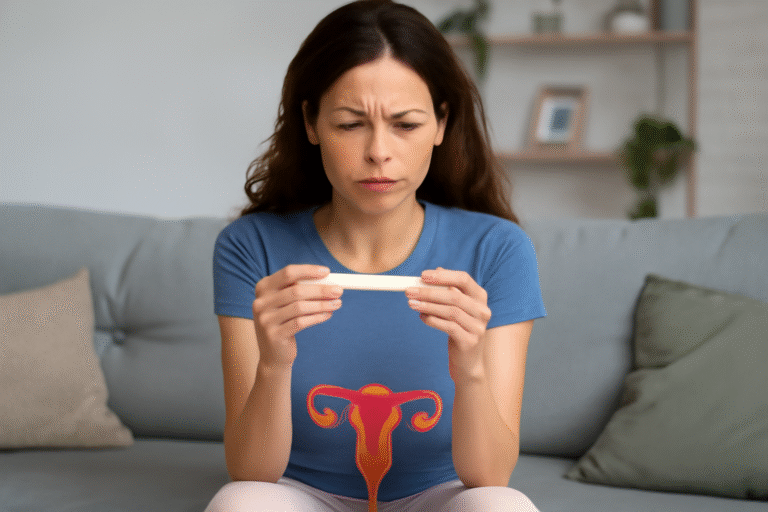Pregnancy is one of the most rewarding journeys in life. But it often comes with physical challenges that can affect daily comfort. Among the most common discomforts is sciatica during pregnancy, a condition that causes sharp pain radiating from the lower back down through the hips, buttocks, and legs. For many women, this pain makes walking, sitting, and even sleeping difficult. The good news is that with the right information and safe practices. it is possible to manage and ease the pain while keeping both mother and baby safe.
Also read: Zofran for Morning Sickness: Is It Safe in Pregnancy?
What is Sciatica?
Sciatica is not a condition in itself but a symptom of irritation or compression of the sciatic nerve. Which is the longest nerve in the body. This nerve starts in the lower back and travels down each leg. When pressure is placed on it, the result can be pain, tingling, or numbness that typically affects one side of the body. For pregnant women, this discomfort can become especially challenging because of the physical changes happening in the body.
Why Does Sciatica Happen During Pregnancy?
There are several reasons why women experience sciatica while pregnant. Hormonal changes play a big role, particularly the release of relaxin, which loosens ligaments to prepare the body for childbirth but can also destabilize the spine. As the pregnancy progresses, the extra weight adds pressure to the lower back and pelvis, making nerve irritation more likely. Postural changes, caused by the growing belly, shift the body’s balance and strain the spine further. In some cases, the baby’s position in the womb presses directly on the sciatic nerve, intensifying the pain.
Common Symptoms to Look Out For
Expectant mothers dealing with sciatica during pregnancy often report a combination of symptoms. These can include sharp or shooting pain that radiates from the lower back down one leg, numbness or tingling in the leg or foot, and even muscle weakness in the affected area. The pain often worsens when sitting for long periods, standing still, or trying to change positions.
Safe Relief Options for Sciatica in Pregnancy
Because medication use is limited during pregnancy, many women rely on natural and non-invasive methods for relief. Warm compresses can help relax tight muscles, while prenatal massages performed by trained professionals ease tension and improve blood flow. Supportive pillows, both for sitting and sleeping, can reduce pressure on the lower back. Some mothers also find comfort in using maternity support belts, which take some of the weight off the spine. Gentle stretching, when done safely, can also bring noticeable relief.
Exercises & Stretches That May Help
Movement plays a crucial role in easing nerve pain, and certain exercises are considered safe during pregnancy. Cat-Cow stretches help release spinal tension, while pelvic tilts strengthen the core and lower back muscles. Many women also benefit from prenatal yoga, where poses are designed to increase flexibility and reduce nerve compression. Low-impact activities like swimming or walking support the back without adding strain. Of course, it is always best to consult a healthcare provider before beginning any exercise routine during pregnancy.
Tips for Sleeping with Sciatica During Pregnancy
Getting good rest can be a struggle when dealing with sciatica, but small changes in sleep posture often make a big difference. Sleeping on the side with a pillow placed between the knees helps align the hips and reduce nerve pressure. Pregnancy pillows, designed to support both the belly and back, can make side-sleeping more comfortable. A firm mattress also provides better support, and if the mattress feels too soft, adding an extra layer of padding can help. It is generally best to avoid sleeping on the back in late pregnancy since it can worsen pressure on the lower spine.
When to Seek Medical Help
Most cases of sciatica during pregnancy are temporary and manageable with self-care, but there are times when professional help is necessary. Severe or persistent pain that does not improve should always be discussed with a doctor. Warning signs such as sudden leg weakness, loss of bladder or bowel control, or pain that becomes progressively worse require immediate medical attention.
Frequently Asked Questions (FAQs)
Is sciatica dangerous during pregnancy?
In most cases, sciatica is not harmful to the baby, though it can cause significant discomfort for the mother. If symptoms are severe, a doctor should be consulted.
Does sciatica go away after pregnancy?
Yes, in many cases the pain improves or completely resolves after delivery once the added pressure on the sciatic nerve is removed.
What is the best exercise for sciatica during pregnancy?
Gentle exercises such as pelvic tilts, prenatal yoga, and swimming are considered safe and effective.
Can I take medication for sciatica pain?
Medication should only be taken if prescribed by a healthcare professional, as many over-the-counter pain relievers are not recommended during pregnancy.
Conclusion
Although sciatica during pregnancy can be challenging, it does not have to overshadow the joy of expecting a baby. By recognizing the symptoms, understanding the causes, and practicing safe methods of relief, mothers-to-be can reduce their discomfort and improve their overall well-being. The key is to balance self-care with professional guidance, ensuring both mother and baby remain safe and healthy throughout the pregnancy journey.




